On January 11-12, 2019, as a student of Grade 10, HFI (International Department, The Affiliated High School of South China Normal University), I got a chance to go to Xingning and Pingyuan, Meizhou, part of South China Historical Trail, with the group of more than 30 persons from the research center of plant resources, SCAU (South China Agricultural University), to do a series of research activities and feel the history and humanity on the south china historical trail in person.

The photo of the research group (The author is the third from the right, front row.)
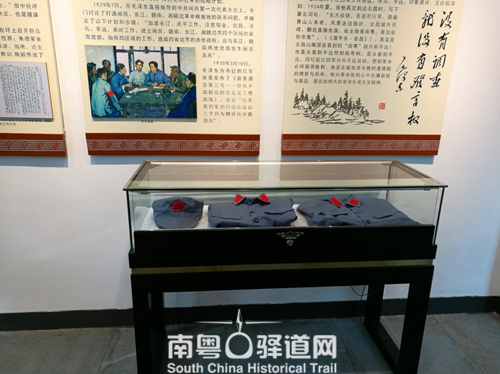
The military uniforms and caps used by the Red Army

The Xunwu Survey written by Chairman Mao in 1930
For the two days, we observed and investigated the natural conditions and local customs. On the second day, we even came to Bachi Town - the hometown of revolution. We visited the exhibition hall of revolutionary history that exhibits the military uniforms, caps and straw scandals which the Red Army used and The Xunwu Survey, the famous survey report written by Chairman Mao. Through this visit, we are well aware that our present happy life is hard won. We must remain true to our original aspiration and work hard. Along the winding mountain road, we finally reached the location of the boundary tablet at the border between Guangdong and Jiangxi.
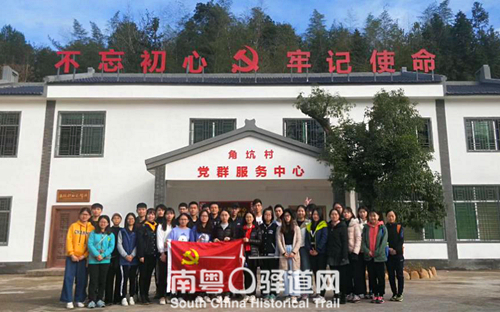
The photo of the research group
At the same time, as a member of the research team of plant resources, supervised by the expert, associate professor Wu Yongbin, I together with other team members, including undergraduates and postgraduates, collected and recognized different kinds of plants along the way.
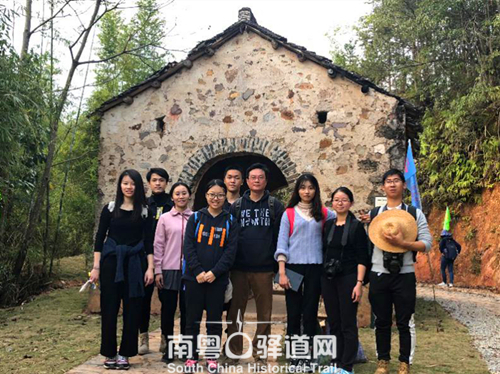
The photo of the research team supervised by Associate Professor Wu Yongbin
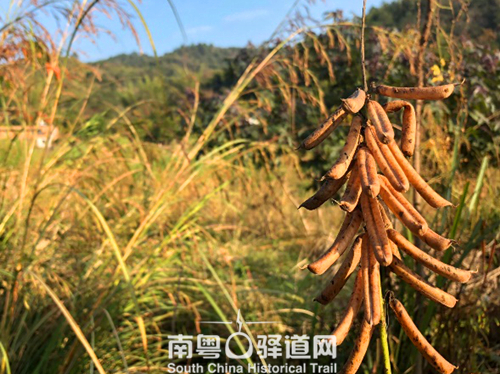
I saw Crotalaria pallida Ait. for the first time.
After settling down in the hotel that night, we carried out a series of studies on the plants that we brought back: having a further recognition, making the tags, pressing specimens as well. In doing so, we searched on the Internet and read the related professional books. We still compared the plants in the photos we had taken with those we had collected, and then we discussed thus to have a better recognition. To ensure accuracy, we even used the rulers to measure the length of the stalks of the plants and used the magnifying glasses to have a more careful observation. In this way, we could get to know more kinds of plants. We could make sure what is not Ardisia japonica (Thunb) Blume but Ardisia hanceana Mez. We got to know Rubus alceaefolius Poir. – a more detailed Rubus corchorifolius L.f., and so on. In addition, to be more scientific, we still recorded carefully the time when we got the plants and the places where we found them when we made the tags. In the end, seeing the stack of specimens that had been made, we did feel the happiness of study.
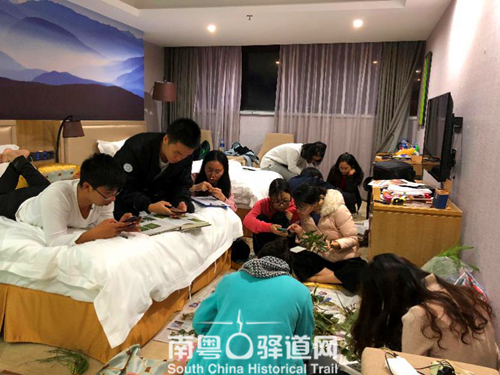
We were doing a series of studies on the plants that we had collected.
In the research activities of these two days, I witnessed our concern for the countryside and our love toward plants and the nature. We still showed our eagerness of learning and that of improving our skill of doing research. At the same time, we realized how important it is for us human beings to protect the nature and improve our living environment. It is our inescapable responsibility to protect our home – the earth.
The research activities on South China Historical Trail by the research team of plant resources of SCAU will go on. And I will go on learning with the team as well.
Chinese version:
走进南粤古驿道的学习体会
责任编辑:周文娟 江家敏